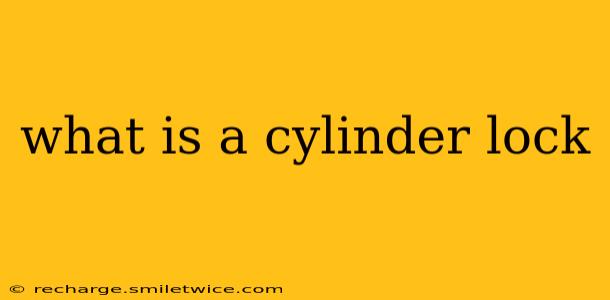A cylinder lock, also known as a pin tumbler lock, is a type of mechanical lock commonly found in doors across residential, commercial, and industrial settings. Its core mechanism relies on a precisely engineered cylinder containing a set of pins that must be aligned in a specific configuration to allow the lock to open. This seemingly simple design offers a surprisingly robust level of security, particularly when paired with high-quality materials and construction. Understanding its components and functionality provides a deeper appreciation for its widespread use.
How Does a Cylinder Lock Work?
At the heart of the cylinder lock is the cylinder itself – a metal barrel containing a series of precisely machined pins. These pins are split into two parts, and a key interacts with them to unlock the mechanism. Each key has a unique arrangement of cuts or grooves that interact with these pins, lifting them to the correct height. When the pins are all aligned precisely at the shear line, the cylinder rotates, allowing the locking mechanism to disengage. This simple yet effective design has stood the test of time and remains the foundation for many modern locking systems.
What are the Different Types of Cylinder Locks?
While the basic principle remains the same, there are various types of cylinder locks, each offering different levels of security and features:
- Single Cylinder Locks: These locks can be operated from one side only (typically the inside). They're often found in interior doors where external access isn't a primary concern.
- Double Cylinder Locks: Offering increased security, these locks can be operated from both sides of the door. This requires a key to unlock from both the inside and outside. They are commonly used in exterior doors for enhanced security.
- Deadbolt Locks: These utilize a more robust locking mechanism that extends further into the doorjamb, significantly increasing security. They often feature a separate cylinder, offering a supplementary locking point to a standard door lock.
- Euro Profile Cylinder Locks: These are a common type with a visible cylindrical mechanism that's easily replaced if the lock is compromised. They are known for their modularity, allowing for easy upgrades or repairs.
What are the Key Components of a Cylinder Lock?
Understanding the core components of a cylinder lock helps to appreciate its overall functionality:
- Cylinder: The core mechanism containing the pins.
- Pins: The internal components that the key interacts with. These are often split into two parts: the key pin and the driver pin.
- Key: The uniquely shaped device that manipulates the pins to unlock the mechanism.
- Cam: A part of the cylinder that rotates to engage or disengage the locking bolt.
- Locking Bolt (Latch Bolt): The bolt that extends into the door frame to secure the door. This retracts when the cylinder rotates.
How Secure are Cylinder Locks?
The security of a cylinder lock depends on several factors:
- Quality of Materials: Higher-quality materials are more resistant to tampering and picking.
- Pin Complexity: Locks with more pins and complex pin configurations are harder to pick.
- Anti-Picking Features: Modern locks often incorporate anti-picking features, making them more resistant to unauthorized entry.
It's important to remember that no lock is completely unpickable, but selecting a high-quality cylinder lock with advanced features can significantly increase its resistance to forced entry.
How to Choose the Right Cylinder Lock?
Selecting the appropriate cylinder lock depends on your specific needs and security requirements. Consider:
- The location of the door: Interior vs. exterior doors require different security levels.
- The level of security required: Residential applications may have different needs compared to commercial settings.
- Budget: High-security locks typically come with a higher price tag.
- Keyway: Consider the type of keyway that will best suit your needs.
Choosing the correct cylinder lock involves understanding your security needs and selecting a lock that meets those needs effectively. Consult with a locksmith for further advice if you need assistance choosing a suitable option.
What are the Common Problems with Cylinder Locks?
- Broken Keys: A common problem that can often be resolved with professional assistance.
- Jammed Locks: This can occur due to debris, wear and tear, or incorrect key usage.
- Lock Picking: Although cylinder locks are secure, they can be picked by skilled individuals.
- Lockouts: Misplacing or losing keys is a frequent issue.
Regular maintenance and the choice of high-quality locks can help to mitigate these problems.
This comprehensive guide provides a foundational understanding of cylinder locks. Remember, consulting a professional locksmith for advice on specific security needs and installation is always recommended.
